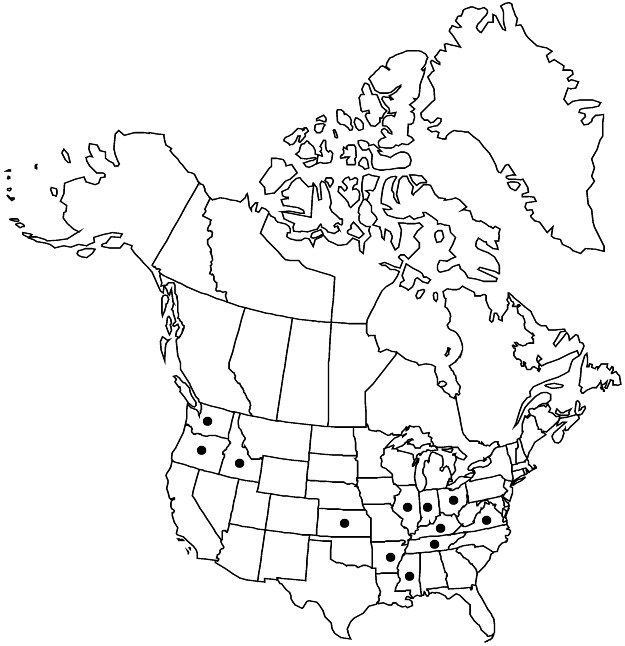Cerastium dubium
Fl. Maine et Loire ed. 2, 1: 267. 1838.
Plants annual, taprooted. Stems erect, many-branched from base, 10–40 cm, minutely viscid-glandular; small axillary tufts of leaves usually absent. Leaves not marcescent, distal sessile, proximal spatulate; blade linear or linear- lanceolate to linear-oblong, 10–30 × 1–4 mm, apex obtuse to subacute, glabrous or sparsely and minutely viscid-glandular. Inflorescences lax, 3–21(–30)-flowered cymes; bracts narrowly lanceolate, glandular-pubescent. Pedicels erect, slender, 2–15 mm, 0.5–3 times as long as sepals, glandular-puberulent Flowers: sepals ovate-lanceolate, 5–6 mm, margins narrow, apex acute to obtuse, minutely viscid-glandular; petals oblanceolate, 5–8 mm, 1.5 times as long as sepals, apex 2-fid; stamens 10; styles 3(–4). Capsules oblong-ovoid, straight, 8–11 mm, ca. 2 times as long as sepals; teeth 6, occasionally 8, erect to spreading, margins convolute. Seeds pale brown, ovate, 0.6 mm diam., tuberculate; testa not inflated. 2n = 36, 38.
Phenology: Flowering spring.
Habitat: Alien weed of cultivated land
Elevation: 200-800 m
Distribution

Introduced; Ark., Idaho, Ill., Ind., Kans., Ky., Miss., Ohio, Oreg., Tenn., Va., Wash., s Europe, Asia.
Discussion
First collected in North America in 1966 in Washington, Cerastium dubium has now been gathered from many widely scattered sites, and appears to be spreading rapidly.